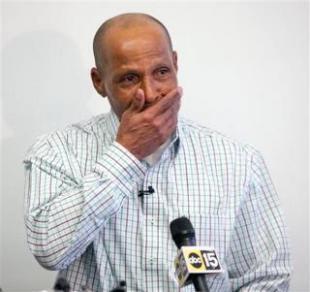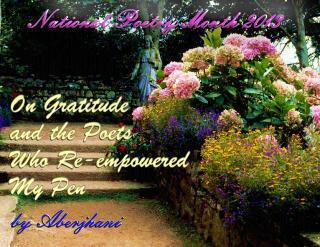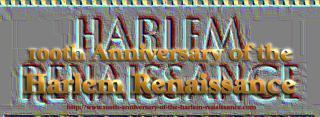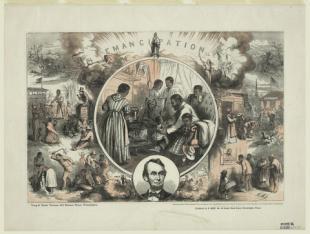Aberjhani's Blog: Notes of a 21st Century Digital Scribe, page 23
April 8, 2013
Justice Remains Elusive in Case of Newly-freed Louis C. Taylor (part 1 of 2)
Published on April 08, 2013 14:30
On Gratitude and the Poets Who Re-Empowered My Pen
Published on April 08, 2013 14:10
March 18, 2013
Sensualized transcendence: Editorial and poem on the art of Jaanika Talts (part 1 of 2)
Published on March 18, 2013 09:55
March 4, 2013
Counselor Calls for Major Change in Talking Back to Dr. Phil (part 2 of 4)
Published on March 04, 2013 08:54
February 9, 2013
A River of Winged Dreams Valentine's Day Letter
Published on February 09, 2013 08:30
January 19, 2013
The Harlem Renaissance and the Year 2020
The exact start of the Harlem Renaissance cannot be easily identified––nor, for that matter, can its end. There are in fact those who maintain that the Harlem Renaissance has never come to full head-on conclusion. It has instead adapted, evolved, and shifted forms like a chameleon of cultural consciousness and moved with steady unimpeded grace from one decade to the next and from one century to the next.
As for when it started: the physical migration of African Americans out of rural areas of the South, from the Caribbean and elsewhere into the New York City neighborhood of Harlem during the 1910s, certainly set the stage for the dazzling explosion of creative genius that would come to be known as the Harlem Renaissance. The people of African descent who made their way to Harlem “on the first thing smoking,” as Zora Neale Hurston put it, not only became captivating subjects of paintings, plays, novels, poetry, short stories, and poems. They also became devoted audiences, patrons, and often very vocal critics of the same.
Stepping into the Swing of Things
Should we say the Harlem Renaissance started with Eubie Blake and Noble Sissles’ hit Broadway musical Shuffle Along in 1921, the publication of Claude McKay’s volume of poems, Harlem Shadows in 1922, or the publication of The New Negro Voices of the Harlem Renaissance, the era-defining anthology edited in by Alain Locke, in 1925? Whether pointing to one of these years and events or reaching back even further, the renaissance without question was in full swing by the time jazzmaster Duke Ellington took over the bandstand at Harlem’s Cotton Club in 1927 and still going strong when Cab Calloway took over the beat in 1931.
Please continue reading at this url: http://www.100th-anniversary-of-the-h...
by Aberjhani

As for when it started: the physical migration of African Americans out of rural areas of the South, from the Caribbean and elsewhere into the New York City neighborhood of Harlem during the 1910s, certainly set the stage for the dazzling explosion of creative genius that would come to be known as the Harlem Renaissance. The people of African descent who made their way to Harlem “on the first thing smoking,” as Zora Neale Hurston put it, not only became captivating subjects of paintings, plays, novels, poetry, short stories, and poems. They also became devoted audiences, patrons, and often very vocal critics of the same.
Stepping into the Swing of Things
Should we say the Harlem Renaissance started with Eubie Blake and Noble Sissles’ hit Broadway musical Shuffle Along in 1921, the publication of Claude McKay’s volume of poems, Harlem Shadows in 1922, or the publication of The New Negro Voices of the Harlem Renaissance, the era-defining anthology edited in by Alain Locke, in 1925? Whether pointing to one of these years and events or reaching back even further, the renaissance without question was in full swing by the time jazzmaster Duke Ellington took over the bandstand at Harlem’s Cotton Club in 1927 and still going strong when Cab Calloway took over the beat in 1931.
Please continue reading at this url: http://www.100th-anniversary-of-the-h...
by Aberjhani

Published on January 19, 2013 15:14
•
Tags:
aberjhani, african-americans, alain-locke, black-history-month, centennial, claude-mckay, cultural-arts, cultural-migrations, duke-ellington, essays-by-aberjhani, eubie-blake, harlem-renaissance, jazz-age, jean-toomer, new-york, noble-sissle, the-great-migration, zora-neale-hurston
The Harlem Renaissance and the Year 2020
Published on January 19, 2013 08:16
January 1, 2013
Notes on the 150th Anniversary of the Emancipation Proclamation (part 1 of 3)
Published on January 01, 2013 14:15
December 22, 2012
Feathers of Gold, Feathers of Silver (from The River of Winged Dreams)
Published on December 22, 2012 08:38
December 11, 2012
Holiday Letter for a Poet Gone to War: Editorial and Poem
Published on December 11, 2012 08:21
Notes of a 21st Century Digital Scribe
Welcome to great adventures in a literary galaxy of fantastic books, articles, poems,essays and Readers.
- Aberjhani's profile
- 251 followers












